Family-owned premium poultry processor Bell & Evans has remained at the front of its industry’s flock by prioritizing high quality from all angles—from its antibiotic-free chicken to the materials and processes within its facilities. The most recent example of this commitment? A 160,000-square-foot, state-of-the-art chicken packaging, further processing, par-fry and storage plant in its hometown of Fredericksburg, Pennsylvania. Stellar was the design-builder for the poultry plant project and found it to be unlike any other project we’ve been a part of. This new facility is infused with cutting edge innovation and durability inside and out, from its materials and finishes to its packaging process.
Claim to Fame: An award-winning poultry processing innovation
First, let’s examine the history of some of Bell & Evans’ poultry innovations. The company nabbed Food Engineering’s 2005 “Plant of the Year” thanks to an evolutionary, multi-phase air chill system which allows Bell & Evans to utilize interval-based enhanced air flow rather than a traditional water bath.
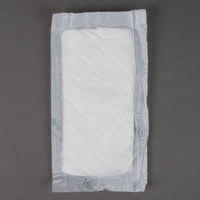
Most processors submerge their chicken in a water bath including chlorine and other chemical additives to decrease the temperature as fast as possible. However, the chicken generally retains up to 15 percent of the water it’s soaked in, resulting in added water weight and lower quality chicken.
Due to retainage, most processors’ poultry packaging includes a “diaper” to absorb any leakage that may occur. The diaper looks like a piece of white cotton placed under the chicken’s styrofoam platter.
Bell & Evans never uses a diaper.
In this new facility, complex multivac packaging lines produce a proprietary poultry package that has absolutely no water leakage.
5 lessons for poultry processors
The need for this chicken packaging, further processing and storage facility spurred from Bell & Evans’ commitment to growing its business among its existing customer base: an elite group including Whole Foods and Wegmans, among others. Bell & Evans would expand its packaging and storage operations by building this plant. There are a few key lessons processors can take away from this particular project, outlined below:
1. Invest in your business’ future by focusing on durability.
Bell & Evans is a family-owned business. Because owner Scott Sechler’s children are in the food processing business and the fact Sechler is committed to running Bell & Evans as a family business for years to come, he wanted this plant to look new for the next 50 years—or at least close to it.
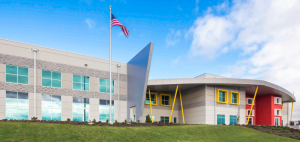
Most food plants nowadays begin to look aged in less than a decade’s time whether it’s due to faded floors or worn fixtures.
Not here.
Bell & Evans opted for the highest quality equipment and finishes to withstand the test of time, including:
- Acid brick flooring is installed throughout the processing areas for its durability against corrosion
- Freezer floors are insulated with six inches of extruded polystyrene beneath the concrete to prevent frost heave
- EMS personnel doors sourced from Pansorf, Germany have a frame that, if the jamb becomes damaged, can be replaced while leaving the entire door intact (versus a typical door, which would require complete replacement).
- Sanitation systems and procedures employ hot water and hand scrubbing rather than caustic chemicals to be gentler on equipment
- Exterior walls constructed of Thermomass precast concrete increase the longevity of the building, utilizing an installation technique that ensure the integrity of the building envelope and maintain superior thermal rating
2. Expand your horizons by looking to overseas innovations.
Sechler began taking trips to Europe when he was a teenager—he estimates he’s made the trek across the Atlantic 40 to 50 times. What’s he doing over there so often? Attending food trade shows and conventions, such as Anuga FoodTec in Cologne, Germany, IFFA in Frankfurt, Interpack in Düsseldorf and the SIAL food innovation show in Paris.
Through such extensive exposure to European innovations, Sechler realized that some of the best quality food processing equipment can be found abroad. And for this new plant, quality was the priority. As a result, Sechler sourced equipment and materials from countries all over the world, including:
- Multivac lines, EMS doors and KUKA robots from Germany
- Rotary scales from Japan
- An automated case-erecting, case-packing, case-sealing, case-delivery and palletizing system from Spain
- Packaging films from Italy
3. Learn from your existing facilities.
Often, improvement begins by looking inward. Before setting out to gather the pieces for their new plant, Bell & Evans examined its existing plant to see what was working and what was not. Pinpointing areas for improvement allowed them to determine exactly what kind of innovations they needed before the search even began.
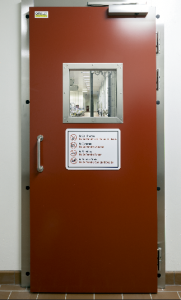
Bell & Evans found that the personnel doors in its existing facility presented room for the most improvement. Too often, these doors weren’t closing properly, or were left ajar so that employees could move about the facility more quickly. The solution to this? EMS doors from Germany, which are not only easier to open and close, but also create a tighter seal to prevent air leakage between spaces.
The forklift doors also exhibited issues in an older facility: they were bruised and battered from not being able to open fast enough. For the new plant, the team selected stainless steel Enviro IXP doors that open 66 inches-per-second faster than typical forklift doors.
However, as important as it is to fix what isn’t working, it’s also beneficial to continue what is. In this case, it was the existing plant’s acid brick floors. Bell & Evans realized the value in their durability, hygiene and low-maintenance advantages. Thus, acid brick flooring was installed throughout the new plant’s processing areas.
4. Design an environment that makes your employees want to come to work every day.
Fredericksburg, Pennsylvania is a small township, home to a population less than 1,000. Needless to say, Bell & Evans is a big part of it, which is why Sechler wanted to make the new plant something both the community and his employees could enjoy.
From the outside in, the building doesn’t look like a typical food processing plant. The front of the facility is brimmed with a large-entrance canopy overhanging an employee courtyard area. Yellow metal columns are spiked beneath the canopy, while a mix of yellow and white shadow boxes adorn the front-facing glass windows, which are dipped in a blue glaze. An immaculate wing wall (an aesthetic addition) breaks up the courtyard and the employee cafeteria located inside the building.
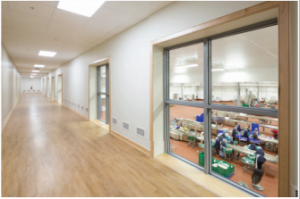
Features in the plant’s main entrance and lobby set the tone for the enjoyable environment Sechler wants associated with Bell & Evans:
- The lobby’s walls are adorned with oversized porcelain tile, rather than plain drywall
- The floors are painted with a customized epoxy paint chip mix featuring the company colors
- A frosted glass partition is situated in the grand, first-floor employee conference room, separating the large space into smaller areas for employee training
- The bathrooms are designed with high-end fixtures, including granite trough sinks
- 8×8-feet windows overlooking the plant processing area give the offices a modern, artistic flare
- An outside courtyard area is designated for employees taking breaks or who wish to enjoy their lunches in the great outdoors
5. Reduce downtime through automation and sanitation planning.
Every food plant is focused on efficiency–and Bell & Evans’ latest endeavor was no exception.
Bell & Evans processes and packages both organic and raised-without-antibiotics (RWA) poultry. Separating the two in this plant is done rather easily, thanks to the variability of the multivacs. The same mutlivac line can be used for both RWA and organic poultry without bearing the risk of cross-contamination. Earlier shifts are dedicated to organic product, while later shifts are dedicated to RWA, allowing the two to be completely separated, while maintaining an efficient production process easily managed by plant supervisors.
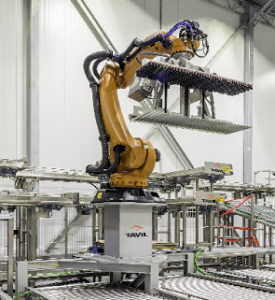
Another example of efficiency is seen in the plant’s secondary packaging. For Bell & Evans’ secondary packaging, Bell & Evans turned to Tavil, a Barcelona-based manufacturer, to create a 75-percent automated case-erecting, case-packing and case-sealing system. Due to it’s complexity, the system took more than a year to design, and more than two months to install—but the wait was worth it. The system is equipped with two modules that can produce four different box types automatically down the line. It runs continuously without the need for user interface thanks to Tavil’s proprietary software coded from scratch.
After the packaged product is put into secondary packaging, state-of-the-art subarctic, graded robots (from KUKA, a company located in Germany) palletize the finished cases in the cooler: an especially unique feature. This method is more efficient and is better for product integrity because it keeps the product temperatures as cool as possible for as long as possible.
Hatching a new model for its peers
From floor to ceiling, and everything in between, Bell & Evans’ new packaging, storage and further processing plant is as innovative as they come. As a showcase facility that virtually redefines quality, it offers plenty of useful insight for poultry processors.
Using cutting edge equipment and materials from all over the world, Bell & Evans ensured their new plant would not only be of the highest-quality today, but that it would remain so for decades to come.
To learn more about Bell & Evans’ process and packaging innovations, visit their product page on our website.



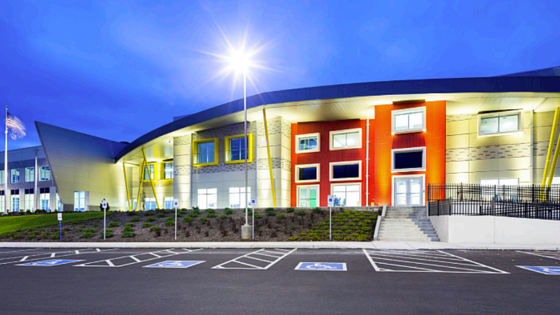

Who were the manufactures and installers for the acid brick and the epoxy chip floors?